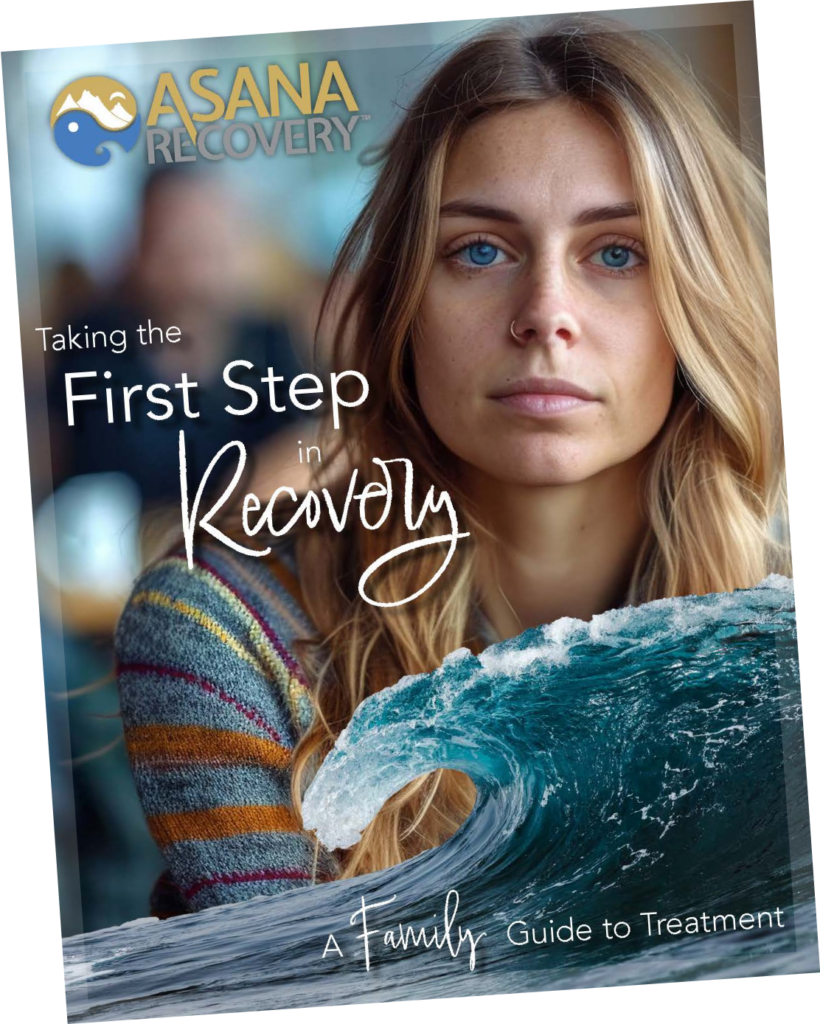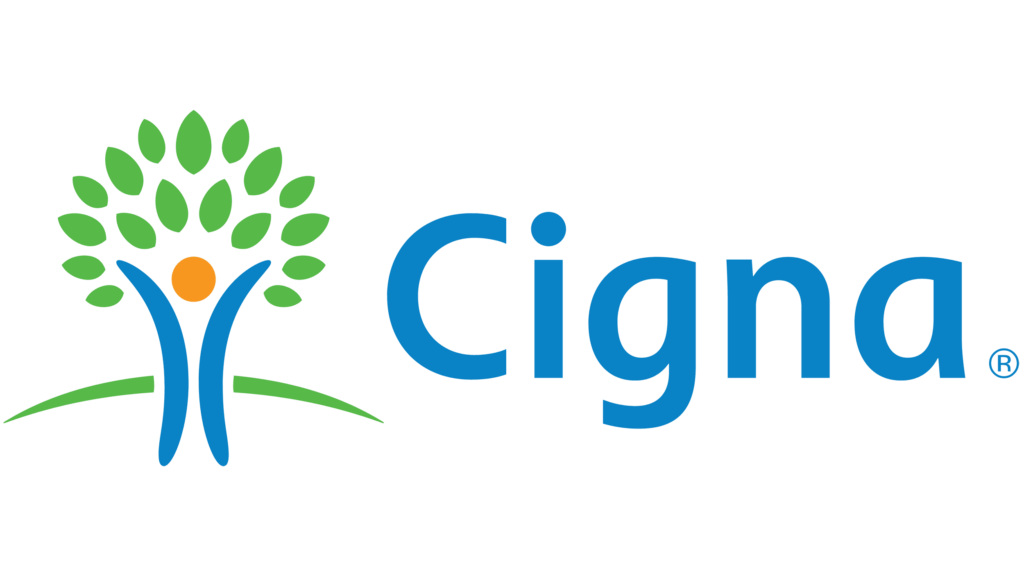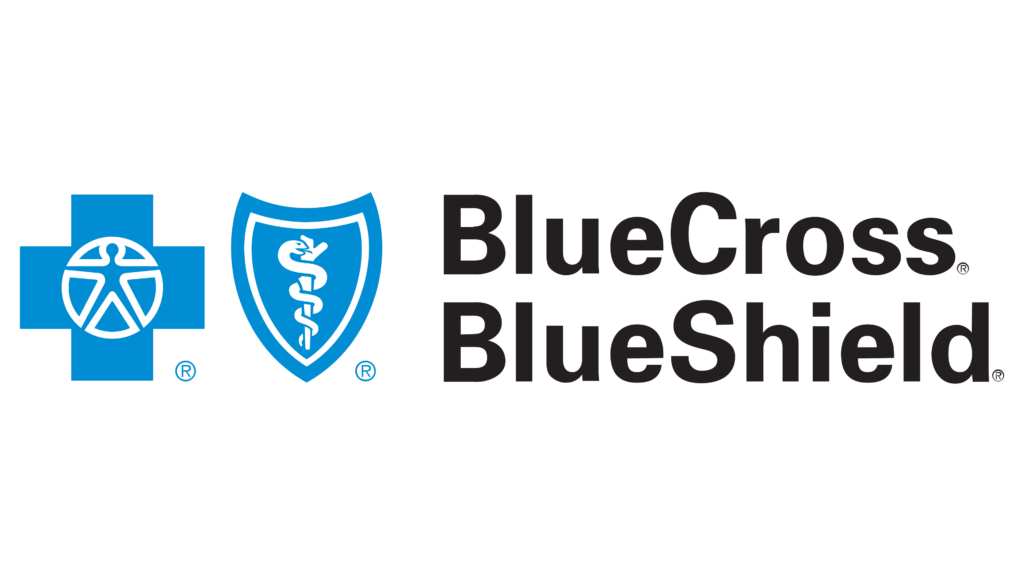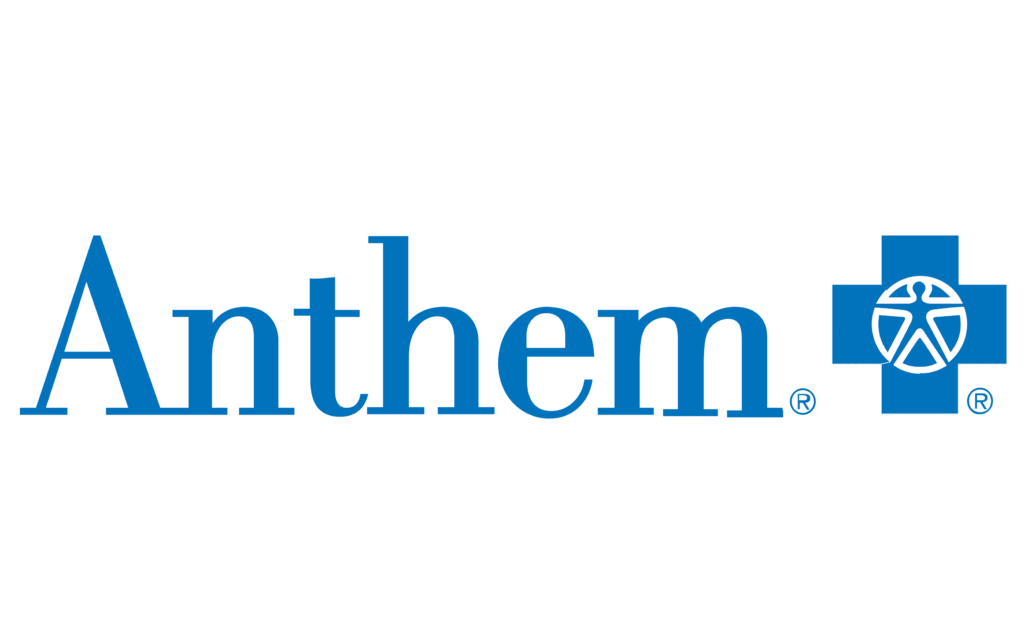Signs of Addiction
Recognizing an addiction to energy drinks or OTC stimulants isn’t always straightforward, especially because these products are legal and socially accepted. However, addiction isn’t defined by the substance itself, but by the compulsive use and negative consequences despite harm. How can you tell if casual use has crossed the line into dependence or addiction? There are several physical, psychological, and behavioral signs to watch for in yourself or a loved one. Understanding these can be the first crucial step towards seeking help, perhaps exploring options for **private care for addiction** at a facility like Asana Recovery.
**Physical Symptoms:**
* **Tolerance:** Needing increasingly larger amounts of the energy drink or stimulant pills to feel the desired effects (alertness, energy). What used to work with one can now requires two or three.
* **Withdrawal:** Experiencing unpleasant physical symptoms when you try to cut down or stop using. These can include severe headaches (often called “caffeine headaches”), overwhelming fatigue, muscle aches, nausea, and difficulty concentrating. The discomfort often drives the person back to using just to feel normal.
* **Physical Health Issues:** Experiencing negative health effects related to consumption, such as frequent jitters, tremors, rapid heartbeat (palpitations), high blood pressure, digestive problems (upset stomach, diarrhea), dizziness, or insomnia, yet continuing to use anyway.
* **Neglecting Physical Needs:** Skipping meals or replacing them with energy drinks, or consistently sacrificing sleep due to stimulant use or its effects.
**Psychological Symptoms:**
* **Cravings:** Having intense urges or desires to use the stimulant, often preoccupying your thoughts.
* **Inability to Control Use:** Consuming more than intended or for longer periods than planned. Making rules for yourself (e.g., “only one a day”) but consistently breaking them.
* **Continued Use Despite Harm:** Knowing that the stimulant use is causing or worsening physical health problems (like heart issues or stomach ulcers) or mental health issues (like anxiety, panic attacks, or irritability), but being unable to stop.
* **Mood Swings:** Experiencing increased irritability, anxiety, restlessness, or agitation, especially when unable to access the stimulant. Some may also experience periods of depression or low mood, particularly during withdrawal.
* **Using to Cope:** Relying on the stimulant to manage stress, boredom, fatigue, or negative emotions instead of developing healthier coping mechanisms.
**Behavioral Changes:**
* **Significant Time Spent:** Spending a lot of time obtaining, using, or recovering from the effects of the stimulant. This might involve frequent trips to the store or planning activities around stimulant availability.
* **Neglecting Responsibilities:** Failing to fulfill obligations at work, school, or home due to stimulant use or its after-effects (e.g., being too jittery to focus, too tired after a crash, or too preoccupied with getting the next fix).
* **Social Withdrawal:** Giving up or reducing important social, occupational, or recreational activities because of stimulant use. Maybe avoiding events where stimulants aren’t available or preferring to use alone.
* **Secrecy or Dishonesty:** Hiding the extent of use from family or friends, lying about consumption levels, or becoming defensive when questioned about it.
* **Financial Problems:** Spending significant amounts of money on energy drinks or OTC pills, potentially leading to financial strain.
* **Failed Attempts to Quit:** Wanting to cut down or stop using but finding yourself unable to do so despite repeated efforts.
If several of these signs resonate with you or describe someone you care about, it’s a strong indicator that **energy drink addiction** or **OTC stimulant abuse** might be present. It’s not a sign of weakness, but rather a sign that a substance has altered brain function in a way that makes quitting incredibly difficult alone. Recognizing these signs is the first step. The next is reaching out for support. Asana Recovery offers confidential assessments and various treatment paths, including specialized
Drug Addiction Treatment programs in Orange County.
Health Risks of Stimulant Addiction
While a single energy drink or caffeine pill might seem harmless, chronic abuse and addiction carry significant health risks that can impact nearly every system in the body. The constant stimulation takes a toll, often leading to serious and sometimes life-threatening conditions. Understanding these dangers is vital for anyone struggling with **energy drink addiction** or **OTC stimulant abuse**, or for their concerned family members. These aren’t just minor side effects; they are serious health complications that underscore the need for professional treatment.
**Cardiovascular Issues:** This is one of the most significant areas of concern. Stimulants like caffeine work by increasing heart rate and blood pressure. Chronic overuse puts immense strain on the heart and blood vessels. Potential cardiovascular problems include:
* **Hypertension (High Blood Pressure):** Consistent stimulant use can lead to chronically elevated blood pressure, a major risk factor for heart disease, stroke, and kidney problems.
* **Arrhythmias (Irregular Heartbeat):** Stimulants can disrupt the heart’s normal rhythm, causing palpitations (feeling like your heart is fluttering or pounding), skipped beats, or more serious arrhythmias like atrial fibrillation or ventricular tachycardia, which can be dangerous.
* **Increased Risk of Heart Attack:** The strain on the heart, combined with increased blood pressure and potential effects on blood clotting, can elevate the risk of myocardial infarction (heart attack), even in younger individuals without pre-existing heart disease.
* **Cardiomyopathy:** In some cases, chronic stimulant abuse has been linked to cardiomyopathy, a condition where the heart muscle becomes weakened, enlarged, or stiff, impairing its ability to pump blood effectively.
* **Aortic Dissection:** Though rare, extremely high doses or chronic abuse, especially when combined with other factors, have been associated with aortic dissection, a life-threatening tear in the body’s main artery.
**Mental Health Implications:** The brain is profoundly affected by stimulant abuse. While users might initially feel increased focus or mood elevation, long-term use often leads to significant mental health problems or exacerbates existing ones. These include:
* **Anxiety Disorders:** Chronic stimulant use is strongly linked to increased anxiety, nervousness, restlessness, and panic attacks. The constant “on edge” feeling can become debilitating.
* **Insomnia and Sleep Disturbances:** Stimulants directly interfere with sleep. Chronic sleep deprivation further worsens mood, concentration, and overall health, creating a vicious cycle of fatigue and stimulant use.
* **Depression:** While stimulants might initially boost mood, the subsequent crash and long-term changes in brain chemistry can lead to or worsen depression. Withdrawal from stimulants often involves significant depressive symptoms.
* **Irritability and Aggression:** Users may become easily agitated, short-tempered, or even aggressive, straining relationships and causing problems at work or home.
* **Psychosis:** In high doses or with prolonged abuse, stimulants can induce psychotic symptoms, including paranoia, hallucinations (seeing or hearing things that aren’t there), and delusions (fixed false beliefs). This is sometimes referred to as stimulant-induced psychosis.
* **Worsening of Pre-existing Conditions:** For individuals already diagnosed with conditions like bipolar disorder, anxiety, or schizophrenia, stimulant abuse can trigger or intensify symptoms, making the underlying illness much harder to manage. This highlights the importance of
Dual Diagnosis Treatment, which addresses both addiction and co-occurring mental health disorders simultaneously.
Beyond these major categories, other health risks include dental problems (due to high sugar content in energy drinks and teeth grinding), digestive issues (ulcers, acid reflux), dehydration, nutritional deficiencies (if stimulants suppress appetite), seizures (especially with high doses or rapid consumption), and potential interactions with other medications. The cumulative effect of these risks paints a clear picture: **energy drink addiction** and **OTC stimulant abuse** are serious health concerns that require attention. If you’re experiencing any of these issues, it’s crucial to seek medical advice and consider treatment options. You can explore comprehensive care, including
Mental Health Outpatient Treatment, at Asana Recovery. Don’t wait for a health crisis to occur; taking action now can prevent long-term damage. Please
Contact Us to discuss your concerns confidentially.
Case Studies and Real-Life Examples
Sometimes, hearing about others’ experiences can make the reality of addiction clearer and offer hope for recovery. While respecting privacy, we can share anonymized stories that reflect common paths into **energy drink addiction** and **OTC stimulant abuse**, and how professional help made a difference. These stories illustrate that anyone can be affected and that recovery is possible with the right support, like the kind offered at **Asana Recovery**, a trusted **drug rehab in Orange County**.
* **Scenario 1: The Overwhelmed Student (Energy Drinks)**
* *Meet Sarah:* A bright college student juggling a heavy course load, a part-time job, and an active social life. Feeling constantly exhausted, she started grabbing an energy drink before early morning classes. Soon, one wasn’t enough to get through late-night study sessions. She escalated to two, then three a day. Her friends noticed she was always wired, anxious, and irritable. Her sleep schedule was chaotic, leading to poorer academic performance despite her efforts. She started experiencing heart palpitations and constant jitters. When she tried to cut back, the withdrawal headaches and fatigue were unbearable. Sarah realized she had an **energy drink addiction** when she found herself hiding cans and lying about how many she drank. Scared and ashamed, she confided in her campus counselor, who recommended seeking specialized treatment. Sarah contacted Asana Recovery and enrolled in their
Intensive Outpatient Program (IOP). Through therapy, particularly
Cognitive Behavioral Therapy (CBT), she learned to identify her triggers (stress, fatigue, academic pressure) and develop healthier coping strategies like time management, mindfulness, and regular exercise. She gradually tapered off the energy drinks under guidance, managing withdrawal with support. Today, Sarah is managing her studies effectively without relying on stimulants, feeling healthier and more in control.
* **Scenario 2: The High-Achieving Professional (OTC Stimulants)**
* *Meet David:* A successful project manager known for his dedication and long hours. Facing tight deadlines and pressure to perform, David started taking OTC caffeine pills to stay alert and focused during late nights at the office. Initially, they helped him power through, earning him praise from his superiors. However, tolerance quickly built. He found himself needing multiple pills just to feel normal and avoid the crushing fatigue and brain fog when he didn’t take them. His use became compulsive – he couldn’t imagine starting his workday without them. His anxiety levels soared, he suffered from insomnia, and his relationships at home became strained due to his irritability and emotional unavailability. He experienced severe panic attacks, which he initially didn’t connect to his **OTC stimulant abuse**. After a particularly frightening episode of chest pain landed him in the emergency room (where doctors warned him about his stimulant intake), David knew he needed help. He searched for **private care for addiction** and found Asana Recovery. Concerned about missing work, he opted for a flexible treatment plan. He benefited greatly from understanding the underlying reasons for his drive to overwork and his reliance on stimulants. Therapy helped him set boundaries, manage stress healthily, and rebuild trust with his family through sessions that included aspects of
Couples Treatment principles. David learned that true success included well-being, not just professional achievement.
* **Scenario 3: The Concerned Parent (Loved One’s Addiction)**
* *Meet Maria:* Maria noticed her teenage son, Alex, was becoming increasingly withdrawn, moody, and secretive. His grades were slipping, and he seemed constantly agitated or, conversely, lethargic. She found dozens of empty energy drink cans hidden in his room and discovered he was also buying caffeine pills online. When she confronted him, he became defensive, insisting it was “no big deal” and just helped him stay awake for gaming. Maria, however, recognized the signs of addiction she’d read about. Worried sick, she researched **drug rehab in Orange County** and contacted Asana Recovery’s admissions team. They provided guidance on how to approach Alex and explained the family support resources available. Alex initially resisted, but with patient encouragement and understanding the health risks, he agreed to an assessment. He participated in a program tailored for young adults, involving individual therapy, group sessions, and family counseling. Maria learned how addiction affects the whole family and how she could best support Alex’s recovery without enabling his behavior. The journey wasn’t easy, but with professional support, Alex addressed his **energy drink addiction** and **OTC stimulant abuse**, learned coping skills, and re-engaged with healthier activities.
These stories highlight common themes: the gradual escalation of use, the development of tolerance and withdrawal, the negative impact on health and relationships, and the difficulty of quitting alone. They also show that seeking help from a specialized center like Asana Recovery provides the tools, support, and structure needed to overcome stimulant addiction and build a healthier future. If any part of these stories sounds familiar, please know you’re not alone. Reaching out is the first step. You can easily
verify insurance for rehab or explore
Private Pay and Payment Options on our website, or simply
Contact Us to talk.
Treatment Options at Asana Recovery
Realizing that you or someone you care about needs help for **energy drink addiction** or **OTC stimulant abuse** is a significant step. The next is finding the right treatment. At Asana Recovery in Orange County, we offer a range of evidence-based programs tailored to individual needs. We understand that addiction is complex and often intertwined with other factors, so we provide comprehensive care designed to address the whole person, not just the substance use. Our goal is to equip you with the skills and support needed for lasting recovery. Here are some key treatment options available:
* **
Medically-Assisted Detox:** For individuals experiencing significant physical dependence and withdrawal symptoms from stimulants (or other substances), detox is often the first step. While caffeine withdrawal is typically not life-threatening like alcohol or opioid withdrawal, it can be intensely uncomfortable (severe headaches, fatigue, depression). Our medical team provides supervision and support to manage withdrawal symptoms safely and comfortably, making the initial phase of recovery more manageable.
* **
Residential Treatment:** For those needing a structured, immersive environment away from triggers and daily stressors, our residential program offers 24/7 support. This allows individuals to focus entirely on their recovery, participating in intensive therapy and building a strong foundation.
* **
Partial Hospitalization Program (PHP):** PHP offers a high level of care, similar to residential treatment in intensity (several hours of therapy per day, multiple days a week), but allows clients to return home or to sober living in the evenings. It’s a good step-down from residential care or for those needing more support than standard outpatient.
* **
Intensive Outpatient Program (IOP):** Our **Intensive Outpatient Program (IOP)** is a flexible yet structured option, ideal for many dealing with stimulant addiction. Clients attend therapy sessions for several hours a day, typically 3-5 days a week, while still managing work, school, or family responsibilities. IOP focuses heavily on developing coping skills, understanding addiction triggers, relapse prevention, and building a sober support network. This is often a suitable level of care for **energy drink addiction** or **OTC stimulant abuse** where medical detox may not be required, but significant behavioral change and support are needed. We even offer a
Virtual IOP for added flexibility.
* **
Outpatient Services:** For individuals stepping down from more intensive programs or those with less severe addiction issues, traditional outpatient therapy provides ongoing support and counseling on a less frequent basis (e.g., once or twice a week).
* **
Cognitive Behavioral Therapy (CBT):** **Cognitive Behavioral Therapy (CBT)** is a cornerstone of our treatment approach. CBT helps individuals identify the negative thought patterns and beliefs that contribute to substance use. By understanding the connection between thoughts, feelings, and behaviors (like reaching for an energy drink when stressed), clients learn to challenge irrational thoughts and develop healthier responses and coping mechanisms. CBT is highly effective for treating addiction and co-occurring mental health issues like anxiety or depression.
* **
Dialectical Behavior Therapy (DBT) for Addiction:** DBT is another powerful therapy we utilize, particularly helpful for individuals struggling with emotional regulation, impulsivity, and interpersonal conflicts often associated with addiction. DBT teaches skills in mindfulness, distress tolerance, emotion regulation, and interpersonal effectiveness.
* **
Medication-Assisted Treatment (MAT):** While **Medication-Assisted Treatment (MAT)** is more commonly associated with opioid or alcohol addiction, certain medications may sometimes be used adjunctively in stimulant addiction treatment. This might involve medications to manage withdrawal symptoms, treat co-occurring mental health conditions (like anxiety or depression exacerbated by stimulant abuse), or potentially reduce cravings in specific situations, always under careful medical supervision.
* **
Dual Diagnosis Treatment:** Many individuals struggling with addiction also face co-occurring mental health disorders like anxiety, depression, bipolar disorder, or PTSD. Stimulant abuse can often mask or worsen these conditions. Our **Dual Diagnosis Treatment** program addresses both the substance use disorder and the mental health condition simultaneously, which is crucial for successful long-term recovery. We also offer specialized
Mental Health Outpatient Treatment.
* **
Couples Treatment and Family Support:** Addiction impacts the entire family system. We offer **Couples Treatment** to help partners navigate the challenges of addiction and recovery together, rebuilding trust and communication. Family therapy sessions involve loved ones in the recovery process, educating them about addiction and fostering a supportive home environment.
* **Holistic Therapies:** We believe in treating the whole person. Alongside traditional therapies, we may incorporate holistic approaches like mindfulness, yoga, nutrition counseling, and fitness activities to promote overall well-being and stress reduction.
* **
Pet-Friendly Rehab:** We understand the bond between people and their pets. For those in our residential programs, we offer pet-friendly options, recognizing the therapeutic benefits of having a beloved animal companion during recovery.
Choosing the right treatment path depends on individual circumstances, the severity of the addiction, and any co-occurring conditions. The team at Asana Recovery conducts thorough assessments to recommend the most appropriate level of care. Whether you need intensive support or flexible outpatient options, we are here to help. We encourage you to explore our
Alcohol Addiction Treatment and
Drug Addiction Treatment pages for more details. Taking the step to inquire about treatment is a sign of courage. You can easily
verify insurance for rehab online or
Contact Us directly to discuss your options for **private care for addiction**.
The Role of Therapy in Recovery
Simply stopping the use of energy drinks or OTC stimulants isn’t enough for lasting recovery. Addiction is more than just physical dependence; it involves deep-rooted psychological patterns, emotional triggers, and learned behaviors. This is why therapy is absolutely essential in overcoming **energy drink addiction** and **OTC stimulant abuse**. Therapy provides the safe space and professional guidance needed to understand the ‘why’ behind the addiction and develop the ‘how’ for staying sober. At Asana Recovery, therapy forms the core of our treatment programs, empowering individuals to build a fulfilling life free from substance dependence.
The importance of therapy in recovery cannot be overstated. It helps individuals:
* **Understand the Root Causes:** Addiction often stems from underlying issues like stress, trauma, low self-esteem, mental health conditions (anxiety, depression), or difficulty coping with life’s challenges. Therapy helps explore these root causes in a non-judgmental environment. Understanding why you started relying on stimulants is crucial for preventing relapse.
* **Identify Triggers:** What situations, emotions, people, or places make you want to use? Therapy helps pinpoint these personal triggers. Once identified, you can learn strategies to either avoid them or manage them effectively when they arise.
* **Develop Coping Skills:** Relying on stimulants is often a maladaptive coping mechanism. Therapy teaches healthy, effective ways to manage stress, boredom, fatigue, difficult emotions, and cravings. Skills might include mindfulness techniques, relaxation exercises, problem-solving strategies, and communication skills.
* **Change Thought Patterns:** As mentioned earlier, therapies like **Cognitive Behavioral Therapy (CBT)** focus on identifying and challenging the negative or irrational thoughts that fuel addiction. For example, changing the thought “I can’t handle this stress without an energy drink” to “I feel stressed, but I can use deep breathing or talk to a friend to cope” can make a huge difference.
* **Address Co-occurring Disorders:** If anxiety, depression, or another mental health issue is present (which is common with stimulant abuse), therapy is vital for treating both conditions simultaneously through
Dual Diagnosis Treatment. Treating only the addiction often leads to relapse if the underlying mental health condition isn’t managed.
* **Improve Relationships:** Addiction often damages relationships with family, friends, and partners. Therapy, including
Couples Treatment and family sessions, can help repair trust, improve communication, and build a stronger support system.
* **Build Self-Esteem and Self-Efficacy:** Successfully navigating recovery challenges in therapy builds confidence and the belief in one’s ability to handle life without substances (self-efficacy).
* **Prevent Relapse:** Therapy provides essential tools and strategies for recognizing warning signs of relapse and intervening early.
At Asana Recovery, we utilize various therapeutic approaches tailored to individual needs. The mainstays include:
* **
Cognitive Behavioral Therapy (CBT):** As discussed, CBT is highly effective in changing the thought-behavior cycles that perpetuate addiction. It’s practical, goal-oriented, and teaches tangible skills.
* **
Dialectical Behavior Therapy (DBT) for Addiction:** DBT builds on CBT, adding skills for managing intense emotions, tolerating distress without resorting to substance use, improving relationships, and practicing mindfulness.
* **Individual Therapy:** One-on-one sessions with a dedicated therapist allow for deep exploration of personal issues, processing emotions, and developing individualized recovery plans.
* **Group Therapy:** Group sessions provide a supportive environment where clients can share experiences, learn from peers, practice communication skills, and realize they are not alone in their struggles. This peer support is incredibly valuable.
* **Family Therapy:** Involving family members helps heal relationships, educates loved ones about addiction, and establishes healthy boundaries and support systems crucial for long-term recovery.
Therapy isn’t a quick fix, but rather an ongoing process of self-discovery, learning, and growth. It equips individuals with the internal resources needed to navigate life’s challenges without resorting to energy drinks or OTC stimulants. Engaging fully in therapy is one of the most powerful investments you can make in your recovery journey. Our team at Asana Recovery is committed to providing compassionate, effective therapy within all our programs, from
Residential Treatment to our
Intensive Outpatient Program (IOP) and beyond.
Preventing Relapse
Completing a treatment program for **energy drink addiction** or **OTC stimulant abuse** is a major accomplishment, but the journey doesn’t end there. Recovery is an ongoing process, and preventing relapse – returning to substance use after a period of abstinence – is a critical part of long-term success. Relapse is common, but it doesn’t mean failure. It often means that coping strategies need to be adjusted or strengthened. At Asana Recovery, we place a strong emphasis on relapse prevention planning, equipping our clients with the strategies and support systems needed to navigate challenges and maintain their hard-earned sobriety.
Effective relapse prevention involves several key components:
* **Identifying High-Risk Situations (Triggers):** As learned in therapy, recognizing personal triggers is paramount. These can be internal (emotions like stress, boredom, anxiety, fatigue) or external (places where you used to buy or use stimulants, people you used with, stressful events, certain times of day). Awareness allows you to anticipate challenges and plan responses.
* **Developing Coping Skills:** This involves actively practicing the healthy coping mechanisms learned during treatment. Instead of automatically reaching for a stimulant when faced with a trigger, you use a planned strategy:
* *Stress:* Deep breathing, meditation, exercise, talking to a sponsor or therapist.
* *Fatigue:* Prioritizing sleep hygiene, gentle exercise, healthy nutrition, scheduling breaks (instead of pushing through with caffeine).
* *Boredom:* Engaging in hobbies, volunteering, connecting with sober friends, planning activities.
* *Cravings:* Using distraction techniques, “urge surfing” (mindfully riding out the craving without acting on it), calling a support person.
* **Building a Strong Support System:** Recovery is much harder alone. A solid support network is crucial. This includes:
* *Sober Friends and Family:* Spending time with people who support your recovery and respect your boundaries. Rebuilding relationships damaged by addiction through honesty and changed behavior.
* *Support Groups:* Participating in groups like SMART Recovery or 12-step programs (like Narcotics Anonymous or Caffeine Anonymous, if available) provides ongoing peer support, accountability, and shared experience.
* *Therapist/Counselor:* Continuing with outpatient therapy sessions as needed provides professional guidance and helps address ongoing challenges.
* *Sponsor (in 12-step programs):* An experienced guide who offers personal support and mentorship.
* **Lifestyle Changes:** Creating a lifestyle that supports recovery is vital. This includes:
* *Healthy Habits:* Regular exercise, balanced nutrition, and adequate sleep are fundamental. They improve mood, reduce stress, and boost natural energy levels, reducing the perceived need for stimulants.
* *Structured Routine:* Maintaining a predictable schedule can reduce stress and provide stability.
* *Meaningful Activities:* Engaging in hobbies, work, volunteering, or education that provide purpose and satisfaction can fill the void left by substance use.
* *Avoiding Cross-Addiction:* Being mindful of replacing stimulant use with other unhealthy behaviors or substances (e.g., excessive sugar, gambling, other drugs).
* **Honesty and Self-Awareness:** Being honest with yourself and your support system about cravings, struggles, or near-misses is crucial. Recognizing early warning signs of relapse (e.g., romanticizing past use, isolating yourself, stopping support group attendance, increasing stress) allows you to seek help before a full relapse occurs.
* **Aftercare Planning:** Before completing a treatment program at Asana Recovery, clients work with their therapist to develop a detailed aftercare plan. This plan outlines specific strategies, support contacts, meeting schedules, therapy appointments, and steps to take if facing difficulties. It serves as a roadmap for maintaining recovery after leaving the structured treatment environment.
Asana Recovery is committed to supporting clients beyond their initial treatment phase. Our comprehensive approach includes robust aftercare planning and connections to ongoing support resources in the community. We understand that challenges will arise, but with the right tools and support, relapse can be prevented, or if it happens, it can be addressed quickly to get back on track. Maintaining recovery from **energy drink addiction** or **OTC stimulant abuse** requires ongoing effort and vigilance, but it leads to a healthier, more fulfilling life. If you’re worried about relapse or need help getting started, remember that support is available. Explore our
Outpatient Services for ongoing care, or
Contact Us to discuss your needs.
How to Seek Help
Taking the step to seek help for **energy drink addiction** or **OTC stimulant abuse** is often the hardest part, but it’s also the most important. Whether you’re concerned about your own use or that of a loved one, knowing how to access support can make all the difference. At Asana Recovery, we strive to make this process as straightforward and supportive as possible. We offer confidential **private care for addiction** in Orange County, tailored to your unique situation. Here’s how you can start the journey towards recovery with us:
1. **Acknowledge the Problem:** The first step is recognizing that there might be an issue. Reviewing the signs of addiction and the health risks discussed earlier can help clarify the situation. If use is causing negative consequences in your life or the life of someone you care about, it’s time to consider help. Remember, acknowledging the need for help is a sign of strength, not weakness.
2. **Reach Out:** Don’t hesitate to make initial contact. You can reach Asana Recovery in several ways:
* **Call Us:** Our compassionate admissions coordinators are available to talk confidentially about your concerns, answer your questions, and explain our programs. This initial call involves no obligation.
* **
Contact Us Online:** Fill out the secure contact form on our website, and one of our team members will get back to you promptly. This is a good option if you’re not ready to talk on the phone yet.
3. **Confidential Assessment:** When you reach out, we’ll typically schedule a free, confidential assessment. This conversation helps us understand your specific situation, the extent of the stimulant use, any co-occurring mental health conditions (
Dual Diagnosis Treatment may be needed), your personal history, and your goals for recovery. This assessment allows us to recommend the most appropriate level of care, whether it’s
Medically-Assisted Detox,
Residential Treatment, PHP, our
Intensive Outpatient Program (IOP), or other
Outpatient Services.
4. **Discuss Treatment Options:** Based on the assessment, we’ll discuss the recommended treatment plan with you. We’ll explain what the program entails, the therapies involved (like
Cognitive Behavioral Therapy (CBT) or
DBT for Addiction), the time commitment, and what a typical day or week looks like. We encourage you to ask questions and express any concerns.
5. **Insurance Verification and Payment Options:** We understand that concerns about cost can be a barrier to seeking treatment. Our team is here to help navigate this:
* **
Insurance Verification:** We work with many major insurance providers. You can easily **verify insurance for rehab** through a secure form on our website or by calling us with your insurance information. We’ll check your benefits quickly and explain your coverage for addiction treatment.
* **
Private Pay and Payment Options:** If you don’t have insurance or prefer not to use it, we offer private pay options. We can discuss payment plans and financing resources that may be available to make treatment more accessible. Our goal is to ensure that cost doesn’t prevent you from getting the help you need.
6. **Admission:** Once the treatment plan and financial arrangements are confirmed, we’ll schedule your admission. Our team will guide you through the necessary paperwork and help you prepare for starting treatment, whether it’s packing for residential care or arranging your schedule for an outpatient program like our IOP. We aim to make the transition into treatment as smooth and stress-free as possible. If you’re bringing a furry friend, we’ll coordinate details for our
Pet-Friendly Rehab option.
Seeking help is a courageous decision. The team at Asana Recovery, your dedicated **drug rehab in Orange County**, is here to support you every step of the way, from your first call to long after you’ve completed your program. We believe recovery is possible for everyone, and we provide the compassionate, evidence-based care needed to overcome **energy drink addiction**, **OTC stimulant abuse**, and other substance use disorders. Don’t wait another day to start healing. Reach out now.
Conclusion
We’ve journeyed through the often-underestimated world of energy drinks and over-the-counter stimulants, moving beyond the casual perception of these products as simple pick-me-ups. We’ve seen how easily accessible substances, marketed for enhanced performance and alertness, can lead to tolerance, dependence, and eventually, a harmful cycle of **energy drink addiction** or **OTC stimulant abuse**. Understanding how these stimulants affect the brain and body, recognizing the physical, psychological, and behavioral signs of addiction, and acknowledging the serious health risks – particularly to the cardiovascular system and mental well-being – are crucial steps in addressing the problem.
The real-life examples illustrate that addiction doesn’t discriminate; it can affect anyone, regardless of age, background, or profession. But more importantly, these stories, along with the detailed exploration of treatment options available at Asana Recovery, show that recovery is achievable. Through comprehensive programs like our
Intensive Outpatient Program (IOP), evidence-based therapies such as
Cognitive Behavioral Therapy (CBT) and
DBT for Addiction, potential support from
Medication-Assisted Treatment (MAT) when appropriate, and specialized care like
Dual Diagnosis Treatment and
Couples Treatment, individuals can break free from stimulant dependence.
We emphasized the vital role of therapy in uncovering root causes, developing coping skills, and changing destructive patterns. Furthermore, we highlighted the importance of relapse prevention strategies and ongoing support systems to maintain long-term recovery. The path isn’t always easy, but it leads to a healthier, more authentic, and fulfilling life.
If you or someone you love is struggling with reliance on energy drinks or OTC stimulants, please know that you are not alone and effective help is available right here in Orange County. Don’t let addiction control your life or jeopardize your health any longer. Take the courageous step towards healing today. Reach out to Asana Recovery. Let us help you navigate the path to recovery with compassion and expertise. You can easily
verify insurance for rehab, explore our
Private Pay and Payment Options, or simply
Contact Us for a confidential conversation about how we can support you. Your journey to a brighter, stimulant-free future can start now.
What are the signs of energy drink addiction?
Signs of energy drink addiction include needing more drinks to get the same effect (tolerance), experiencing withdrawal symptoms like headaches or fatigue when cutting back, continuing use despite negative health effects (jitters, anxiety, sleep problems), spending excessive time or money on energy drinks, neglecting responsibilities, and being unable to control or reduce consumption despite wanting to. Relying on them to cope with stress or fatigue is also a key indicator. If these signs are present, seeking help from a facility like Asana Recovery is recommended.
How do OTC stimulants affect mental health?
Over-the-counter (OTC) stimulant abuse can significantly impact mental health. Common effects include increased anxiety, nervousness, irritability, and panic attacks. They disrupt sleep patterns, leading to insomnia and worsening mood disorders. Prolonged use can contribute to or exacerbate depression, especially during withdrawal phases. In some cases, high doses or chronic abuse can even trigger paranoia or stimulant-induced psychosis. Addressing these mental health implications often requires professional help, possibly through
Dual Diagnosis Treatment.
What treatment options are available for stimulant addiction?
How can I verify my insurance for rehab at Asana Recovery?
You can easily **verify insurance for rehab** at Asana Recovery through our website. Simply visit our
Insurance Verification page and fill out the secure online form with your insurance details. Our admissions team will quickly check your benefits and contact you to explain your coverage for addiction treatment programs. Alternatively, you can call our admissions line directly, and our coordinators can verify your insurance information over the phone. We work with many major providers to make treatment accessible.
What is the role of therapy in addiction recovery?
Therapy plays a crucial role in addiction recovery by addressing the psychological and emotional aspects of substance use. It helps individuals understand the root causes of their addiction, identify triggers, and develop healthy coping mechanisms to manage cravings and stress without resorting to substances like energy drinks or OTC stimulants. Therapies like
Cognitive Behavioral Therapy (CBT) help change negative thought patterns and behaviors. Therapy also provides a space to address co-occurring mental health issues, improve relationships through family or
Couples Treatment, build self-esteem, and develop essential relapse prevention skills for long-term sobriety.







